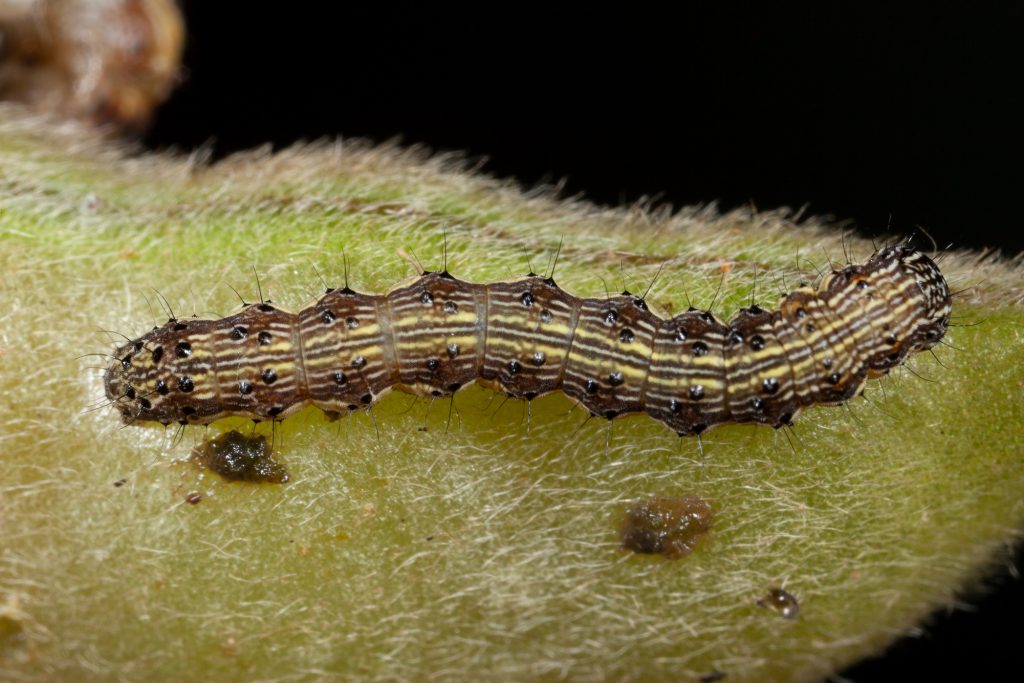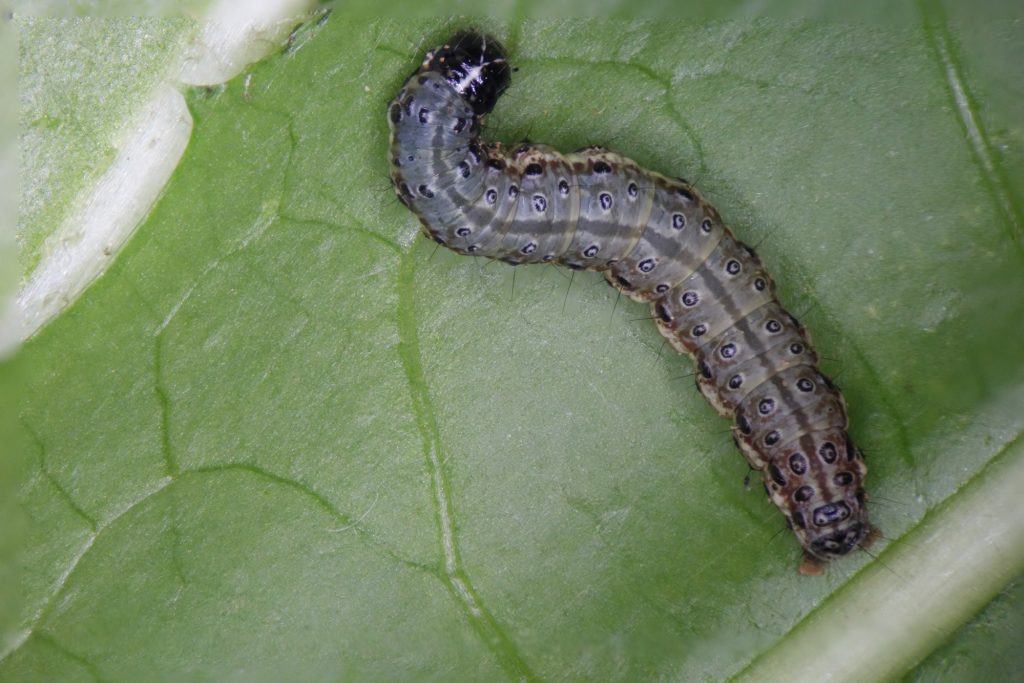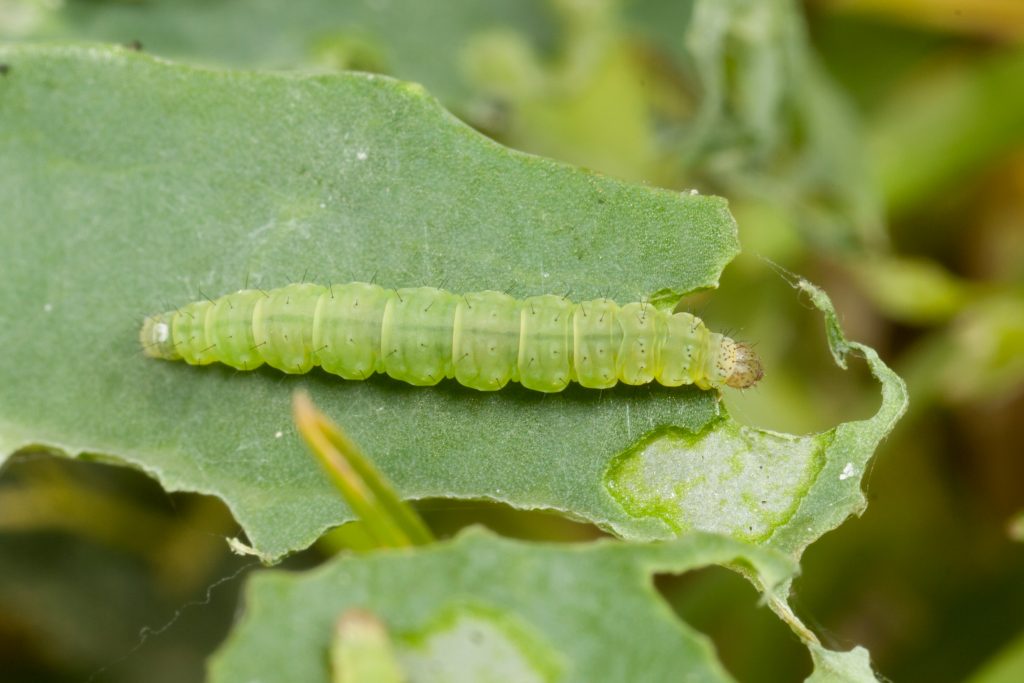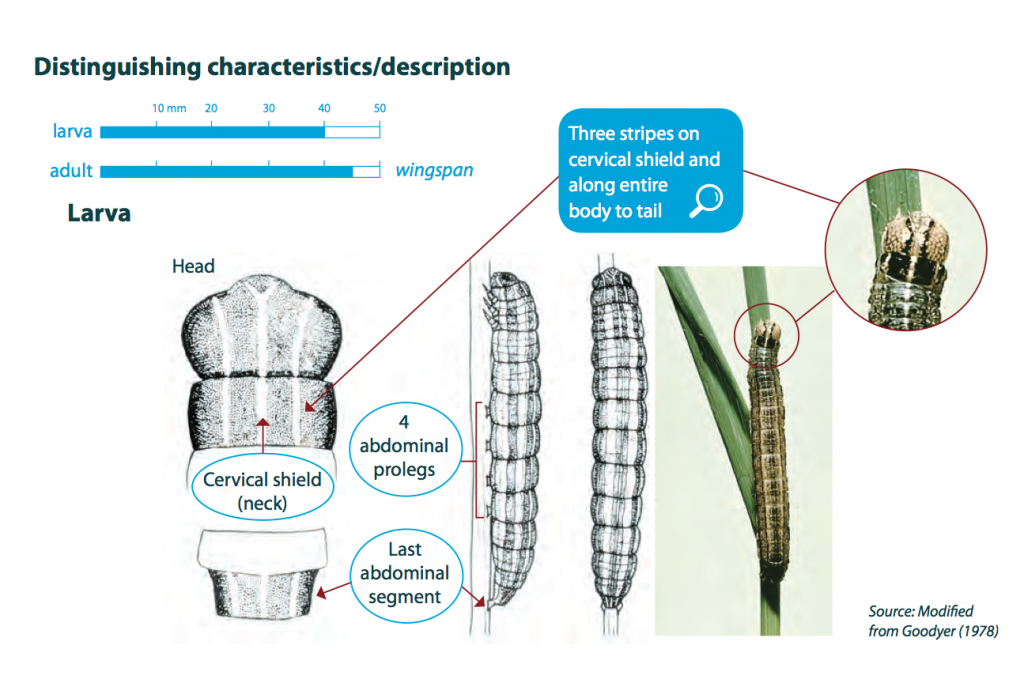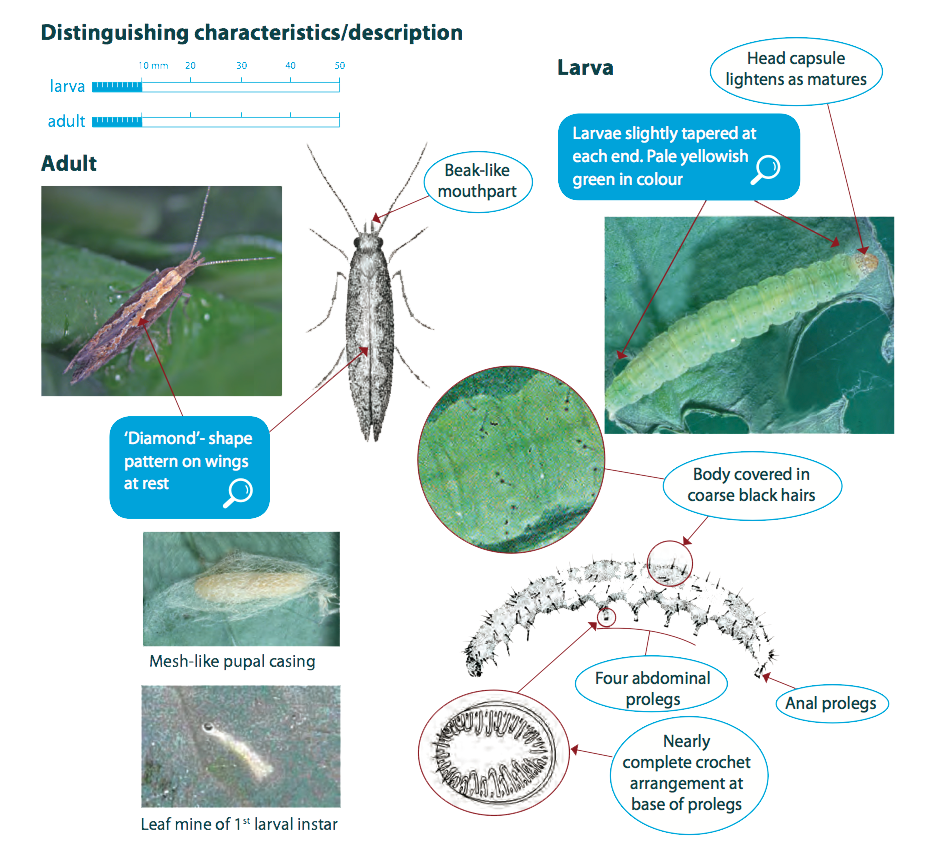We’re heading towards the time of year where you may be seeing a few of different species of lepidoptera (butterfly and moth) larvae around. These caterpillars can be hard to tell apart, but identification is important because some species are resistant to pesticides and others are benign or even beneficial.
So here is a quick overview of the different species you’re likely to see in grains crops and what you should do if you find them.
Lepidopteran pests in grains
The larvae of a number of lepidopteran species cause damage in grains crops because of their appetites for foliage (which can kill emerging crops or damage establish crops), head lopping or direct feeding on grains.

It is important to be able to tell the difference between species because some, such as corn earworm (Helicoverpa armigera) and Diamond back moth (Plutella xylostella) have evolved resistance to some chemicals. Resistance can render some sprays ineffective and result in pests that are much harder to control.
Also, many lepidopteran larvae are only minor pests which rarely cause damage, such as looper caterpillars (family Geometridae), cabbage white butterfly (family Pieridae) and tiger moths (family Arctiidae). There are also many native butterflies and moths which cause no risk to broadacre crops, so there is no “one size fits all” management approach.
Main species of concern
The main groups of caterpillars to be concerned about include armyworms, budworms and diamondback moths. Below is a summary of the main species found in grain crops (rated by size) and when and where they are likely to be found over the year.
| Species | Class size of mature grubs | Larvae likely to be seen over … | Likely to be seen in … |
| Common armyworm Mythimna convecta | >30mm | Spring – summer | Winter cereals & pasture |
| Corn earworm Helicoverpa armigera | >30mm | Spring – summer | Winter pulses, summer grains and occasionally wheat and barley |
| Native budworm Helicoverpa punctigera | >30mm | Spring – summer | Broadleaf plants, pulses, canola, lucerne, sunflower and clovers. |
| Fall armyworm Spodoptera frugiperda | >30mm | Summer (est. 2020) | Maize, linseed, millet, cotton, lucerne, sunflower, rice, soybean |
| Diamondback moth Plutella xylostella | <20mm | Spring – summer (can occur all year) | Canola and other brassica crops |
| Cabbage centre grub Hellula sp. | <20mm | Late spring – summer (occasional pest) | Brassica crops especially forage brassicas |
| Weed web moth Achyra affinitalis | <20mm | Summer (occasional pest) | Lucerne, canola, medic, soybean, cotton and lupins |
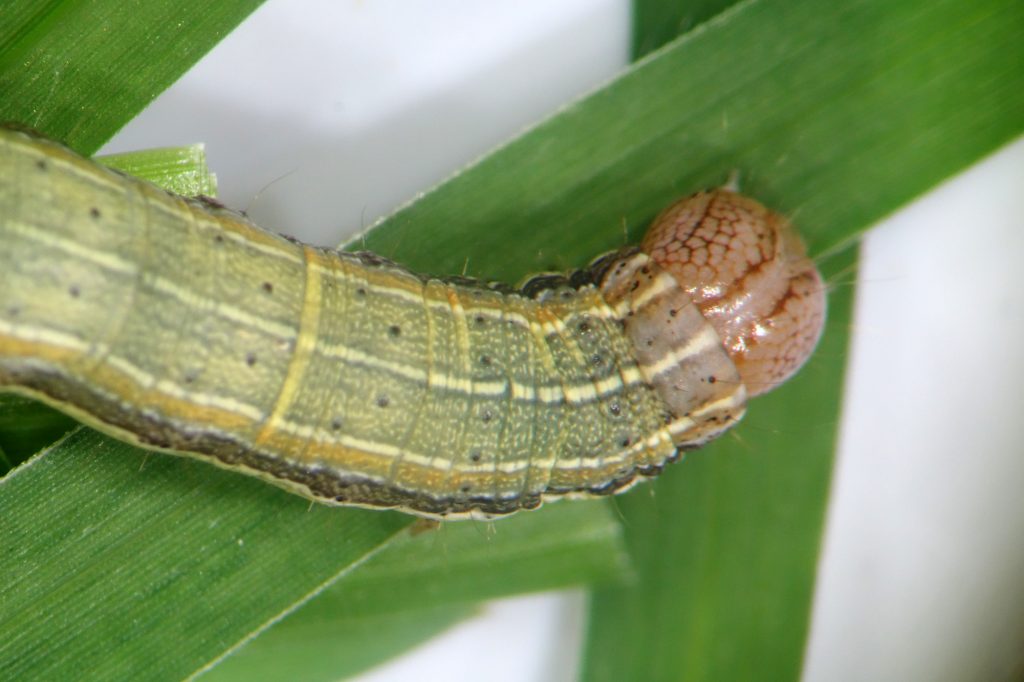
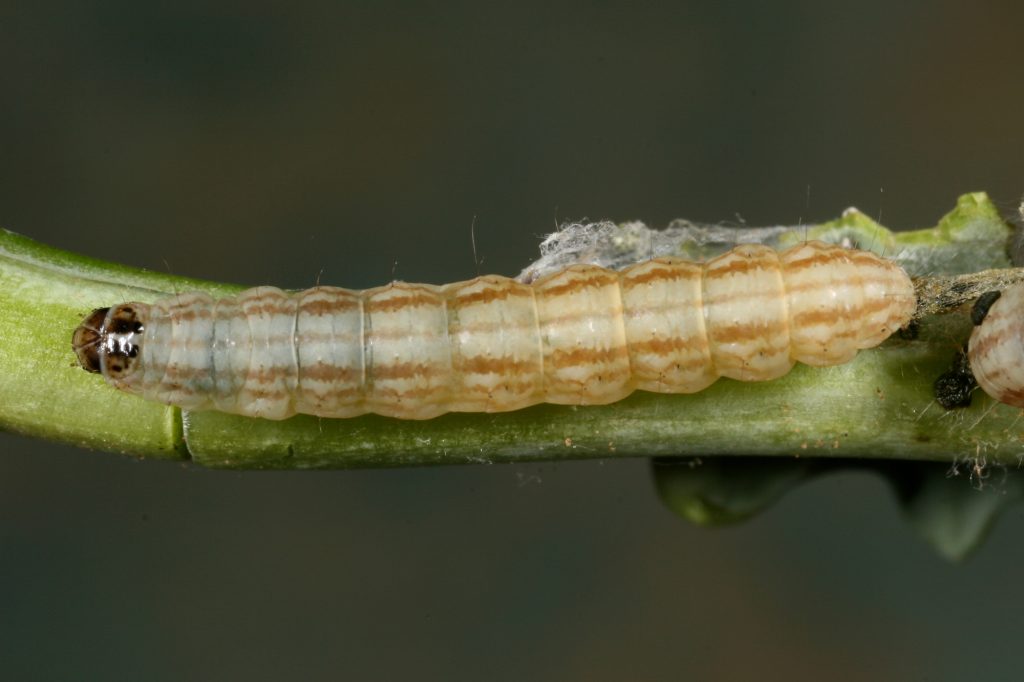
Please note that colour is not a good identification feature for lepidopteran larvae. For more details on the general features of different groups see the infographics at the end of this article.
Using IPM to manage caterpillar pests
An IPM approach is essential for the ongoing management of lepidopteran larvae. It is important to note that chemical control is frequently not required.
The developmental stage of the caterpillar, the numbers being found and the presence of beneficials will have a huge impact on whether chemical control is needed, and of what type.
The size of a caterpillar infestation (density and distribution) within a crop of armyworm and budworm (mostly migratory species) is initially set by the scale of the migration. However, for other species that may be present in the crop environment all year, the initial numbers of larvae often depend on the availability of food and shelter over summer.
The extent to which an established, moderate infestation of caterpillars will inflict damage can be regulated by the presence of natural enemies. A sudden surge of pests is less likely to be held back by natural enemies.
Natural enemies which are important to caterpillar control include many species of parasitoid wasps and flies (including several that are microscopic), ground and foliage spiders, predatory bugs (e.g. shield and assassin), native earwigs, brown lacewings and lady beetles. Some of these smaller predators and parasitoids specifically hunt out and kill eggs. There are also various fungal and viral diseases of lepidopterous larvae that can decimate populations.
We want your larvae!
Cesar Australia are collaborating with the University of Melbourne to study the diversity of parasitoid species which could be useful allies in the fight against caterpillar pests. To do this, we collect larvae from the field and raise them in the lab to see what emerges. From prior experience we know parasitism can vary from as little as 10% to >80% of larvae.
This project is also interested in endosymbionts present in lepidoptera and their parasitoids: bacteria that live within the cells of other organisms in a symbiotic relationship. These endosymbionts can impact the ability of pests to survive external pressures like insecticides or climatic variations as well as influencing the transmission or viruses and susceptibility to predation. And they can lead to parasitoids that are more effective biocontrol agents.
For more information you can watch our recent research updates webinar.
This is where you come in!
If you come across any lepidopteran larvae in the field we would greatly appreciate you sending them in to us (using these guidelines) so that we can rear out any parasitoids present and examine the caterpillars for endosymbionts. Building our knowledge of the diversity of parasitoids, and the endosymbiont infections within parasitoids and caterpillars, are important steps towards improving your IPM toolkit for controlling lepidopteran pests!
Acknowledgements
Thank you to Garry McDonald and Ary Hoffman for contributions to this article.
Additional identification information
Cover image: Photo by Andrew Weeks, Cesar Australia


